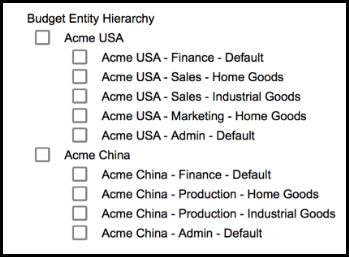- 2 Minutes to read
- Print
- DarkLight
- PDF
What are Budget Entities and Why are they Needed?
- 2 Minutes to read
- Print
- DarkLight
- PDF
Entities are a combination of dimensions. This combination of dimensions forms entities that make a hierarchy, which is called the Budget Entity Hierarchy. The Budget Entity hierarchy is important because you will create budget templates and map them to each entity within the hierarchy. Entities are dependent upon templates. Without templates, you cannot enter data (budget) against an entity. Entities and templates are dependent upon scenarios. Scenarios drive entities and templates. See the relationship diagram below for a visual interpretation as well as the explanation below.

In the diagram above, A chemical engineering company named XYZ uses Excel to budget by Region, Department, and Account. The company is growing rapidly and needs a better way to plan and budget. XYZ implements Planful. During Configuration Tasks setup, XYZ selects to budget by 5 dimensions within Planful. They are; Region, Department, Account, Operating Unit, and Business Unit. These 5 dimensions make up the Planful chart of accounts for XYZ and are defined on the Define Financial Segments Configuration Task.
XYZ then established the Financial Budget Entity definition by which they will perform budgeting. The Entity definition is defined on the Define Budget Entity Configuration Task. Each entity is formed from any combination of all or some of the 5 dimension members; Region, Department, Account, Operating Unit and Business Unit.
In the diagram above, Region, Department, Operating Unit and Business Unit dimensions are used to define the entity. In this case, budget entities are created for each region for the engineering department, research and development operating unit and the lab, field, chemical room, and bunker business units. The Operating Expenses, Workforce Template, Capital Exp, and Cash Flow templates are mapped to the ENGLAB 1000 budget entity and the ENGFIELD 1100 budget entity.
You don't have to use all financial dimensions for a financial budget entity. For example, in the image below there are 6 financial dimensions (segments).
But only 2 (Company and Department) are included in the Budget Entity definition on the Define Financial Budget Entity Configuration page.
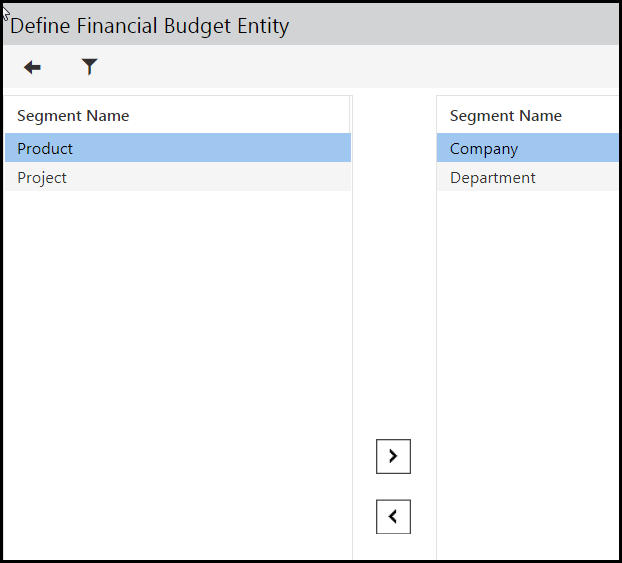
Here is the Budget Entity Hierarchy based on the definition for the budget entity opened from the Hierarchy Management screen. Notice the hierarchy is a combination of company (Everest) and department (Sales, Ops, Corp Mgmt Group).
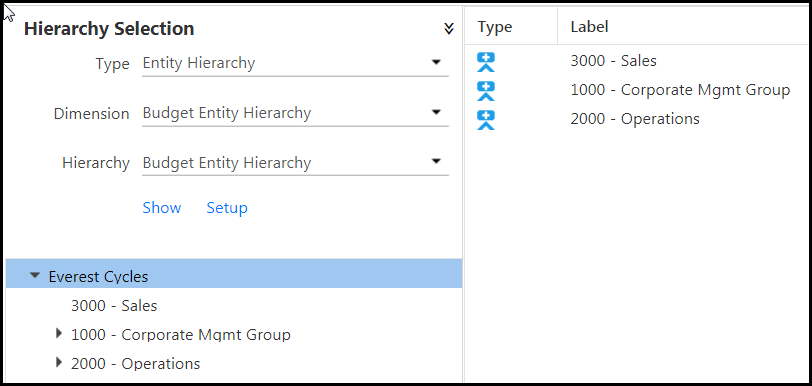
Why are Budget Entities Needed?
Budget entities are a way to simplify potential dimension member Combinations for easy Budget maintenance and data entry in Planning. Let's take a sample set of dimensions and dimension members shown below.
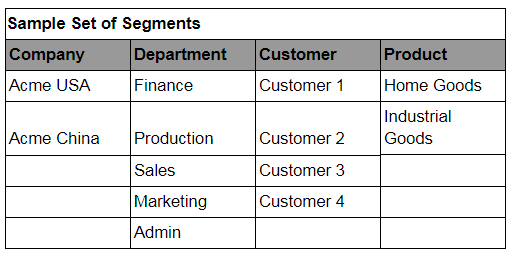
The above dimension members can result in a vast number of potential combinations, some of which may not make much business sense. To better explain this, see the table below. Notice that a Combination of Acme USA - Production may not make sense because there may not be any production activity in the USA. Similarly, a combination of Acme China - Marketing may not make business sense. So Budget entities are the combinations - which are actually used by a Business and for which users want to maintain Budgets or Forecasts
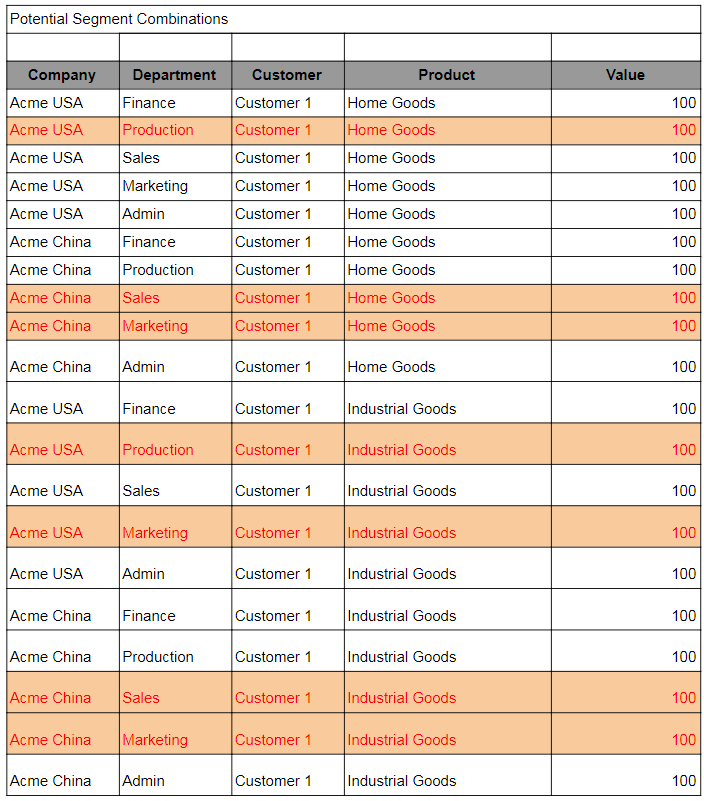
Users may decide that their normal data entry is based on a combination of Company - Department - Product and they may choose to select customer during a data entry period. If this is the case, the result will be the budget entity tree structure shown below (without customer), which has only those combinations (company - department - product) of dimensions for which budgeting is performed.
